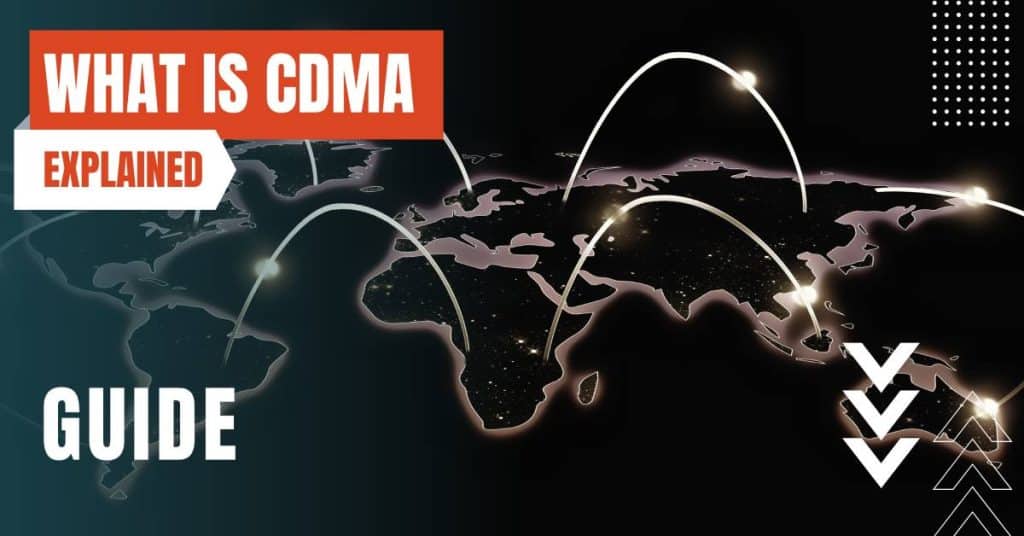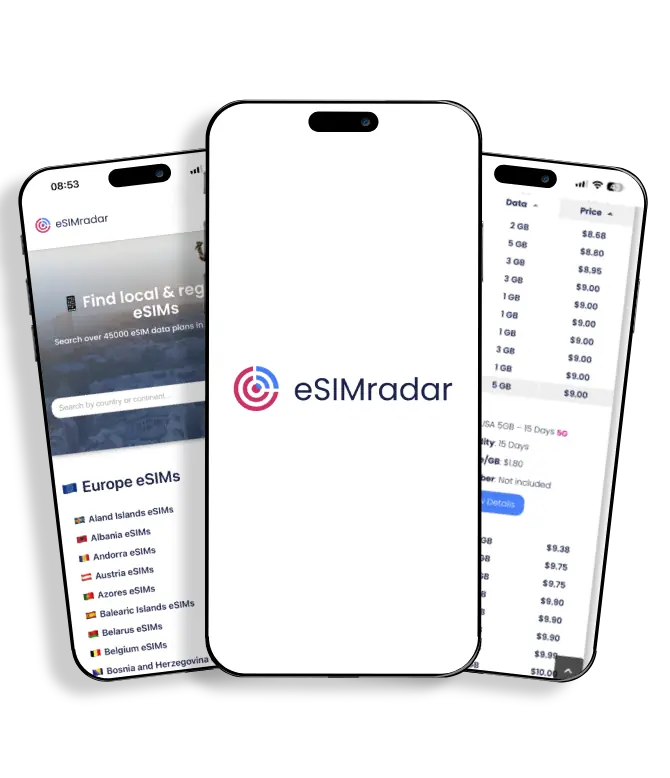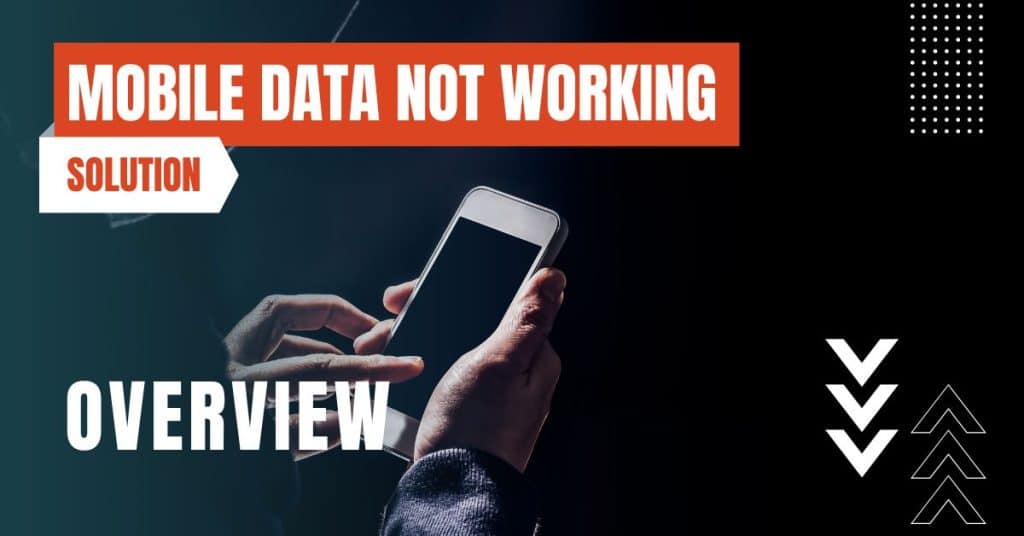All of the products and services we feature are chosen independently. If you click through links we provide, we may earn a commission. Learn more
Written by: Emily Chen
What is CDMA
- Updated: September 30, 2023 | Published:
Code Division Multiple Access (CDMA) is a digital cellular technology that uses spread spectrum techniques to allow multiple users to share the same frequency band simultaneously.
Unlike other technologies such as GSM, which divide the frequency band into different time slots for each user, CDMA allows all users to occupy all channels at the same time.
This is achieved by assigning a unique code to each user and using this code to spread the user’s signal across the entire frequency band.

CDMA Explained
The Mechanics of CDMA
CDMA works by assigning a unique code to each user’s signal and spreading it across the available frequency band. This unique code is used to modulate the user’s signal, effectively embedding it within a higher frequency signal that spans the entire frequency band.
When the signal is received, the receiver uses the same unique code to demodulate the signal and extract the original data.
The unique codes used in CDMA are designed to be orthogonal to each other, meaning that they have a low cross-correlation. This means that when the receiver is demodulating a particular user’s signal, the signals from other users appear as noise and can be easily filtered out.
This allows multiple users to transmit simultaneously without interfering with each other, a feature that is key to CDMA’s ability to support multiple users in the same frequency band.
CDMA Standards
There are several mobile phone standards that use CDMA as their underlying access method. These include IS-95 (also known as cdmaOne), CDMA2000, and W-CDMA (used by UMTS, a 3G standard).
Each of these standards uses a slightly different version of CDMA, but the basic principle of using unique codes to allow multiple users to share the same frequency band is common to all of them.
CDMA vs GSM
CDMA and GSM are the two most prevalent mobile phone technologies in use today. While both technologies allow multiple users to share the same frequency band, they do so in very different ways. GSM uses a method called Time Division Multiple Access (TDMA), which divides the frequency band into different time slots and assigns each user a specific time slot.
CDMA, on the other hand, allows all users to transmit simultaneously over the entire frequency band, using unique codes to separate the signals from different users.
One of the key differences between CDMA and GSM is the way they handle calls and data. In GSM, a call or data session takes up a fixed amount of bandwidth for the duration of the call or session.
In CDMA, the amount of bandwidth used by a call or data session can vary dynamically based on the amount of data being transmitted. This can make CDMA more efficient than GSM when dealing with data services, which often involve bursts of data followed by periods of inactivity.
CDMA's Influence on Modern Technologies
While CDMA itself may be on the decline, its influence on modern wireless technologies cannot be overstated. The principles of CDMA have been incorporated into newer technologies such as LTE and 5G.
For instance, LTE uses a variant of CDMA called Orthogonal Frequency Division Multiple Access (OFDMA) for the downlink (from the base station to the mobile device). OFDMA uses the same principle of assigning unique codes to each user’s signal, but it does so in the frequency domain rather than the time domain.
5G, the latest generation of mobile technology, also incorporates principles from CDMA. It uses a technology called New Radio (NR), which supports a flexible use of frequency spectrum, multiple antenna techniques, and advanced coding schemes.
These features, which are reminiscent of the capabilities of CDMA, allow 5G to support a wide range of applications, from high-speed mobile broadband to Internet of Things (IoT) devices.
CDMA's Legacy
CDMA’s legacy is not just in the technologies it has influenced, but also in the markets it has served. In the United States, for example, CDMA was the dominant technology for many years, with major carriers like Verizon and Sprint using CDMA for their networks.
While these carriers have since transitioned to LTE and 5G, the impact of CDMA on the development of the US mobile market is undeniable.
In other parts of the world, CDMA has played a key role in bringing mobile connectivity to areas where wired infrastructure is lacking. In India, for example, CDMA was used to provide wireless local loop (WLL) services, which allowed telecom operators to provide fixed-line services using wireless technology.
This helped to expand the reach of telecom services in a country where the wired infrastructure was not as developed.
The End of an Era
Despite its significant contributions to the world of mobile communications, the era of CDMA is coming to an end. Major carriers around the world are phasing out their CDMA networks in favor of LTE and 5G.
In the United States, for example, Verizon has announced that it will shut down its CDMA network at the end of 2022. Similarly, in India, Reliance Communications, one of the major CDMA operators, has migrated its customers to 4G.
While the sun may be setting on CDMA, its impact will continue to be felt for years to come. The principles of CDMA have shaped the development of modern wireless technologies, and its legacy will live on in the networks and devices we use every day.
CDMA has been a cornerstone of mobile communications for over two decades. Its unique approach to handling multiple users has made it a popular choice for mobile networks around the world. While CDMA may be on its way out, its influence on modern wireless technologies is undeniable.
As we move into the era of 5G and beyond, the principles of CDMA will continue to guide the development of new technologies and shape the future of mobile communications.
By entering your email & signing up, you agree to receive promotional emails on eSIMs and insider tips. You can unsubscribe or withdraw your consent at any time.

About The Author
Spread the Word, Share the Joy
Compare eSIMs
Why keep the secret to yourself? Spread the joy of eSIMradar and let everyone in on the eSIM experience!
Easy eSIM Comparison for Your Needs
Simplifying your search! Easily compare eSIM plans tailored to your specific needs
Coverage in 210+ Countries
Benefit from our extensive eSIM comparison with 30+ providers in over 210 destinations.
Save money without second-guessing
Our platform helps you maximize value, ensuring competitive prices.
Enjoy Hassle-Free Travel Abroad
Whether you’re on holiday or a business trip abroad, stay connected with ease and focus on enjoying your experiences,
Find Your Perfect eSIM & Exclusive Deals!
Find your ideal eSIM effortlessly and stay connected in style wherever your adventures take you! Get exclusive deals and discounts at your fingertips, ensuring you get connected for less on your travels!




![Get a 100% Free eSIM Trial – incl. Data [Deals in 2024]](https://esimradar.com/wp-content/uploads/2023/02/free-esim-data-included-res.jpg)





